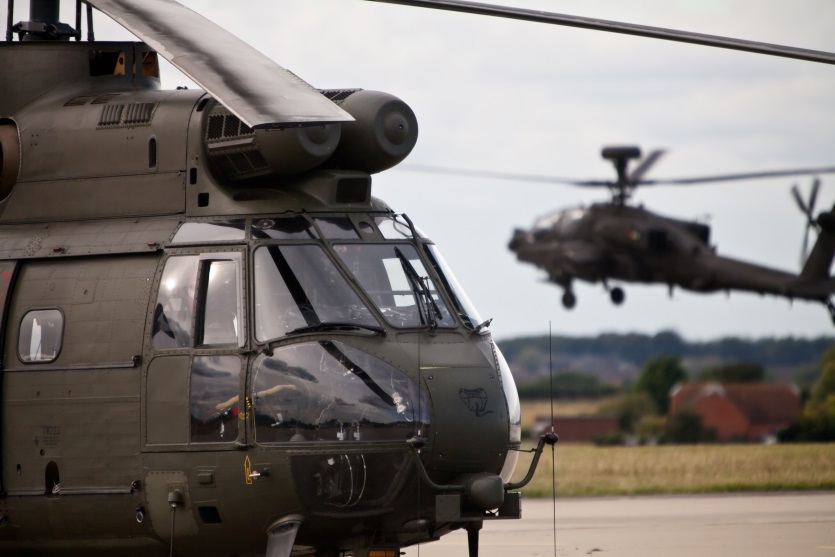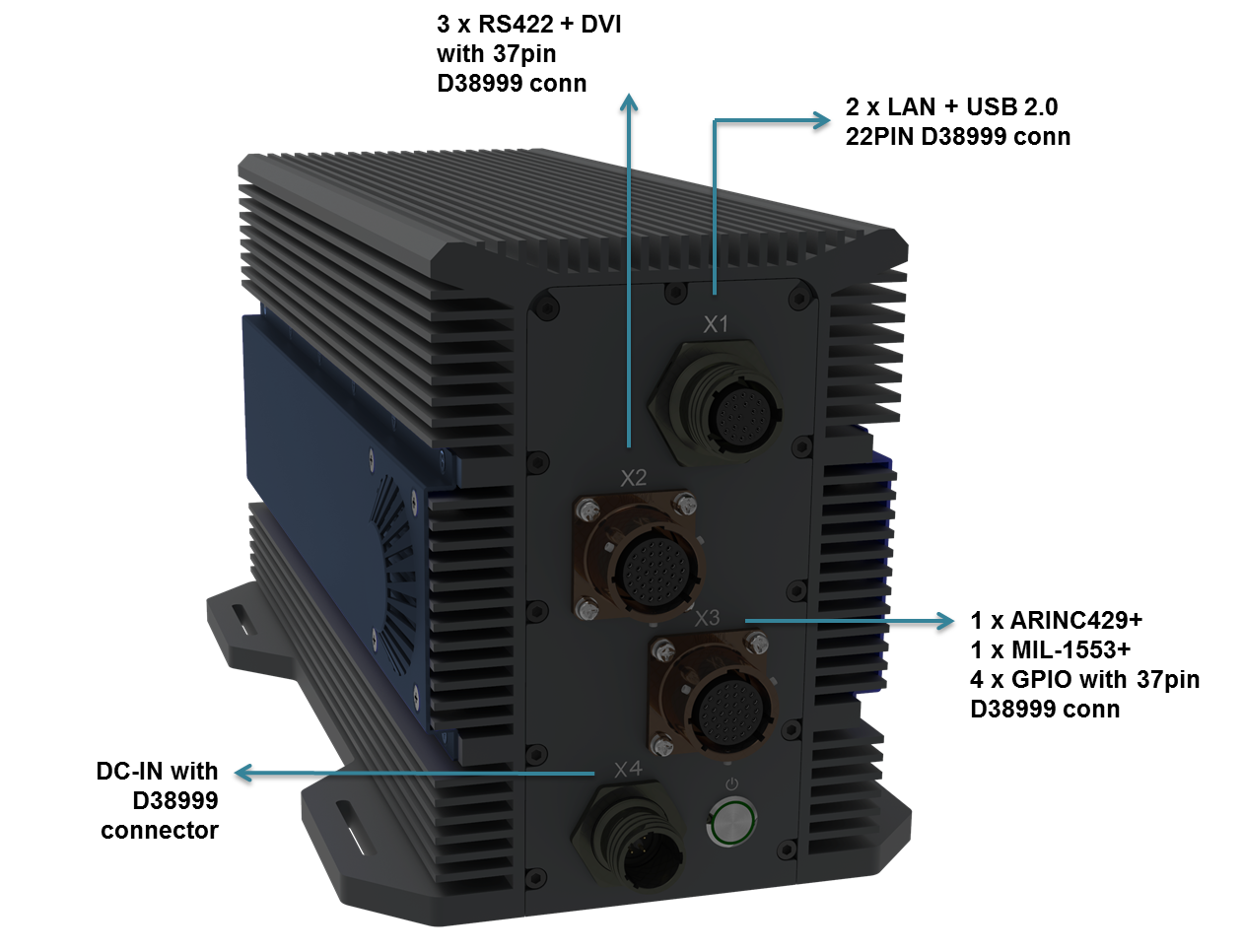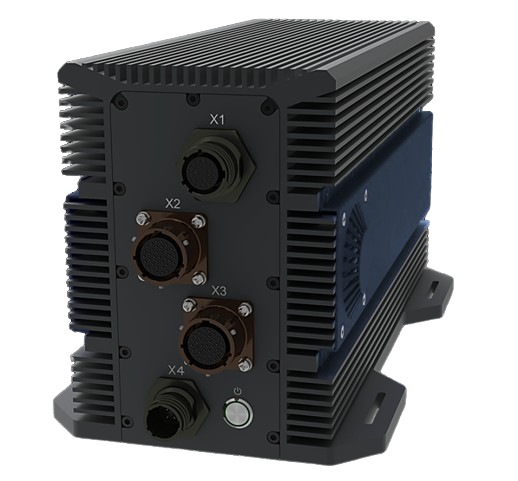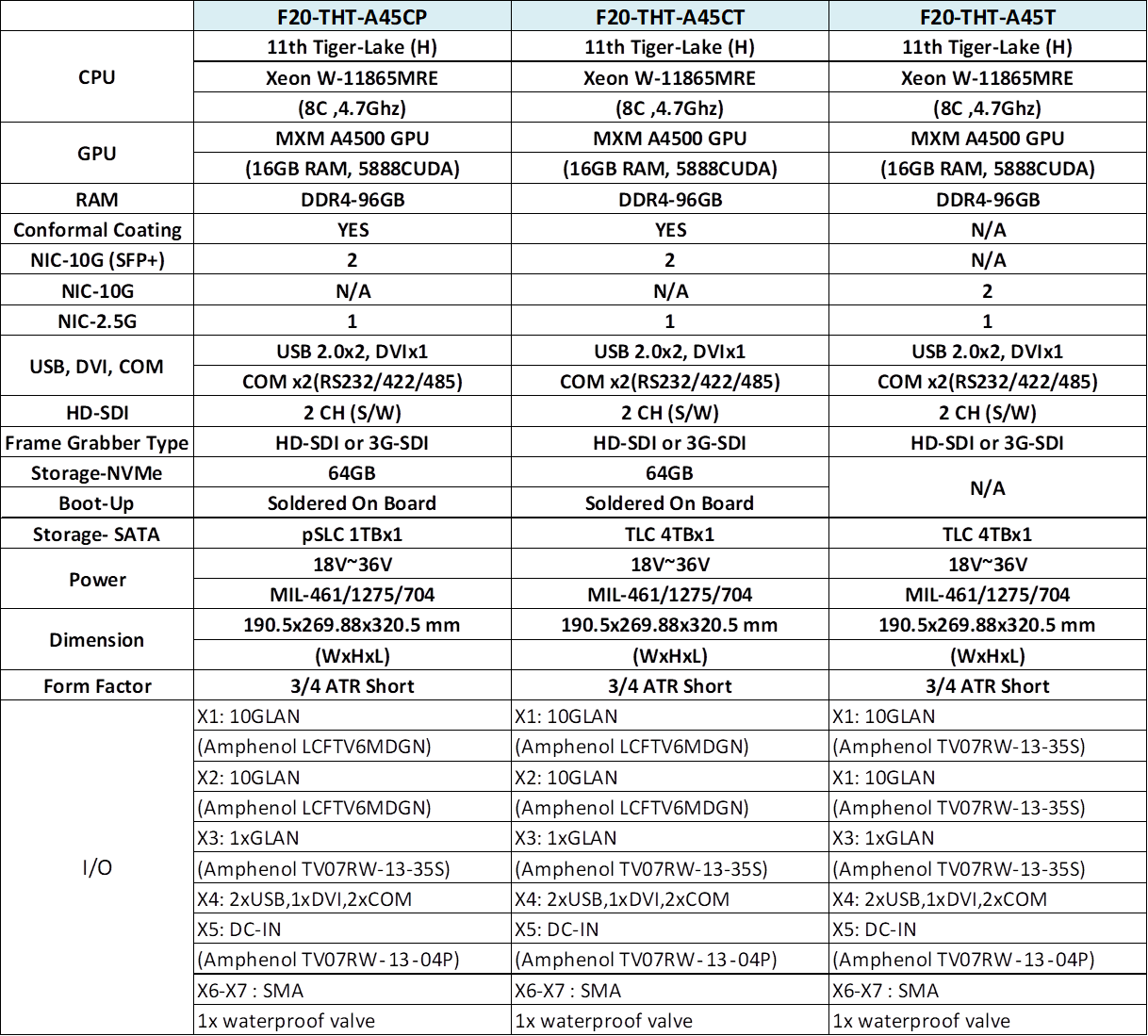Technical Profile
Introduction
ATR (Air Transport Rack) is a standard that specifies form fit and function of enclosures designed to protect the main internal system. This military enclosure must meet EMI / EMC requirements to prevent noise interference, provide lightning protection and be isolated from small particle contaminants. So, it can be deployed in unmanned aerial vehicles, fighters, and helicopters. To satisfy diverse conditions, ATR chassis are available in different sizes—1/2, 3/4 and Full ATR sizes.
F20-THT is an Air-Borne Mission GPU Computer that was designed to meet ATR 3/4 short size. F20-THT is built to withstand harsh environment by comply with MIL-STD 810 to sustain 75G shock and 10G vibration.

Block Diagram

ARINC 429
ARINC 429 is the worldwide standard for data transmission in aircraft electronics. It is adopted mostly for commercial aircraft and transport aircraft network protocol standard. Communications, guidance, altitude, altitude reference, flight management, and more are all needed to work together to accomplish a successful flight. The physical connection wires are twisted pairs carrying balanced differential signaling.

MIL STD 1553 is US Military Department of Defence standard that was initially published in 1973.
MIL STD 1553 is a differential serial bus. Also, it is a dual redundant data bus. Each node is connected to each of the redundant buses. Secondly, if one should fail, communications can still continue.
There are three types of operating nodes for 1553 Bus:
•A Bus Controller initiates all messages, traffic and commands the remote terminals to transmit/receive data.
•Remote Terminal interfaces the 1553 Bus and Sub System Bridge to other 1553 Buses. It responds to the bus controller.
•The Bus Monitor listens to messages and records them.

- MIL-STD-810 & Full IP65 protection
F20-THT is designed to meet strict SWaP requirements and to withstand harsh environments, including extreme temperature, shock/vibration, sand/dust, and salt/fog. With ruggedized design and high functionality, the IP65 and MIL-STD resistance F20-THT is the ideal tactical vehicle on the battlefield.





